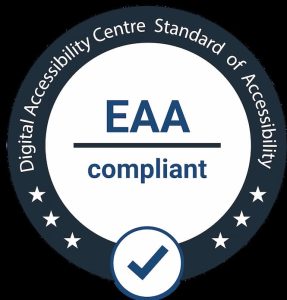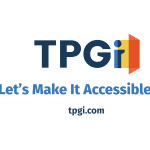
EAA Regulation Timelines
Note June 2025 – Worth noting that EAA is a European directive like EN 301-549. The UK is not part of the European Union,
although the geography makes it part of Europe. Politically and legally, it is not. If offering products and services to Europeans then those European regulations come into play.
-
EN 301-549 is a European standard that defines accessibility requirements for ICT products and services, supporting both the EU Web Accessibility Directive and the EAA678.
-
After Brexit, the UK’s PSBAR no longer directly references EN 301-549, but instead points to WCAG as the technical standard47.
-
The EAA is not part of UK law; the UK government has not adopted it, and there is no current indication it will do so123.
-
However, UK businesses offering products or services in the EU must comply with the EAA and, by extension, EN 301-549 for those offerings13.
- Here is a very good post by UK company on EAA Best Steps.
Original Article
There has been some information which appears to say new self service kiosk terminals have until 2030 to be EAA-compliant. From what we can gather that conclusion is not correct. New terminals are subject. Existing terminals have been grandfathered and allowed to operate for an additional 5 years. As usual ATMs in existing deployments get a pass. Probably the banks arranged that.
‘While the deadline to make websites and apps accessible is 2025, the EU has recognised that making self-service terminals accessible to all is a much harder, more complex task, with requirements on both the providers of kiosk hardware, and the software that runs on them. So, deadlines for the accessibility of new terminals are for June 2030.’ — https://kdseurope.com/european-accessibility-act-what-will-it-mean-for-kiosks-and-atms/
We are checking with the governing entity in Europe but we also asked Matt Ater and TPGi for their take. Thanks Matt!
I took another look at Article 32 of the EAA, which covers transitional measures, affecting kiosks/self-service terminals and the services they provide.
Here’s what the article says (I’ve bolded the relevant text for our discussion):
-
- Without prejudice to paragraph 2 of this Article, Member States shall provide for a transitional period ending on 28 June 2030 during which service providers may continue to provide their services using products which were lawfully used by them to provide similar services before that date. Service contracts agreed before 28 June 2025 may continue without alteration until they expire, but no longer than five years from that date.
- Member States may provide that self-service terminals lawfully used by service providers for the provision of services before 28 June 2025 may continue to be used in the provision of similar services until the end of their economically useful life, but no longer than 20 years after their entry into use.
In other words, there is an exception for qualifying existing machines used to provide services, whereby they can continue to be used beyond the June 2025 deadline even if they don’t meet EAA requirements.
Per Article 2) of EAA, self-service terminals covered by EAA include:
(b) the following self-service terminals:
(i) payment terminals;
(ii) the following self-service terminals dedicated to the provision of services covered by this Directive:
— automated teller machines;
— ticketing machines;
— check-in machines;
— interactive self-service terminals providing information, excluding terminals installed as integrated parts of vehicles, aircrafts, ships or rolling stock.
But beyond discussing interpretation of the official definition of “placing on the market”, I don’t see anything that provides an extension or exception to EAA requirements for self-service terminals placed on the market after June 28 2025. This recent article by Axess Lab on EAA and kiosks supports that view: https://axesslab.com/ict-a11y-eu/
Hope that helps – and I’d be keen to see any sources that the KDS article might have relied on for their conclusion. It’s possible that there has been lobbying at member state level to reduce the requirements for self service terminals during the transposition process, but I would expect it would be legally impossible to dilute the requirements of an EU directive.
*********************************
Matt Ater
Vispero™ | Vice President
17757 US Highway 19 N, Suite 200, Clearwater, FL 33764
T 703-944-7317
The European Accessibility Act: Understanding Digital Accessibility
18th December 2024
The European Accessibility Act (EAA) is a directive of the European parliament passed on 17 April 2019. It succeeds the Web Accessibility Directive of 26 October 2016 which applied primarily to public sector websites and mobile applications. The EAA expands responsibility for accessible Information and Communications Technology (ICT) to many product types and service sectors in the EU. It also incorporates by reference accessibility requirements of other EU acts, making it a single legal point of reference for EU accessibility regulation.
This explainer describes the responsibilities on various entities created by the act, including the types of products and services covered by the act. Conformance to the act primarily relies on harmonised standards, and there are measures to address fundamental alteration and disproportionate burden. Finally the explainer collates and describes all the accessibility requirements for various types of products and services.
Introduction
The EAA was created to respond to the growing use of Information and Communications Technology (ICT) in modern society. Creation of this act is also part of the EU’s responsibility under the UN Convention on the Rights of Persons with Disabilities.
Applicable products and services placed on the market or updated after 28 June 2025 must conform to the requirements of the act. Products or services already on the market at that time, and not updated since before that date, do not have to conform until a) they are updated, or b) 28 June 2030 at the latest. Long-life self-service terminals installed before 2025 do not have to be replaced until a) they reach the end of their economic life, or b) 28 June 2045. Another exception for emergency services gives them until 28 June 2027 to meet the requirements.

EAA Compliance -A badge with a dark blue border featuring the text Digital Accessibility Centre Standard of Accessibility. Inside, EAA compliant is written on a white background, adhering to EAA regulations, with a checkmark symbol at the bottom.
These deadlines set by the act are on 28 June of the following years:
- 2022 – Member states to notify the EU of implementation acts;
- 2025 – New products and services must conform to the EAA;
- 2027 – Emergency services must conform to the EAA;
- 2030 – Expiry of 5-year exception for products and services placed on the market before 28 June 2025;
- 2045 – Expiry of 20-year exception for long-life self-service terminals.
28 June 2025 is the upcoming deadline for products and services, after which new products and services must conform to the act. At this time covered organisations should have active plans for conformance under way, plans to design for and verify accessibility, document conformance efforts, verify the supply chain, etc.





